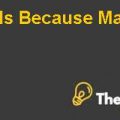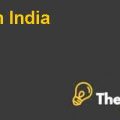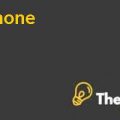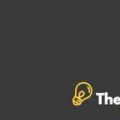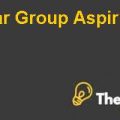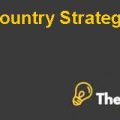
HANSSON PRIVATE LEBEL INC.
In the year 1992, Tucker Hansson started the company named Hansson Private Label Inc. The company he started was resulted from the purchase of Simon Health and Beauty products asset. These two companies' products ranged from mouthwash, shampoo, shaving cream, sun cream and soap. To become the leading company in the personal health care industry, Hansson used its selling strategy that gives the competitive edge over its competitors. This selling strategy also increases its revenue, and these incremental revenues were resulted from creating strong relationships with its retailers. From these retailer's, customers were purchasing the personal care products and services. Wall Mart was the mass merchant of Hansson, Kroger was the retailer and owned supermarkets, and Costco was the club store.
After establishing the company, Hansson led the company as CEO and led the company towards the market’s leading position and this leading position was achieved due to the efforts and effective management skills Hansson had. During his tenure as a CEO of Hansson Private Label Inc. the company‘s financial position was sound, and that sound position was held for five years and revenues were increasing gradually. Furthermore, the profit margin was also increasing steadily.
The historical financial position of Hansson Private Label, Inc. was also reflected that it enjoyed the growth from the year 2004 to 2005 and during this growth period the growth was around 8%. Further the growth was increased in the year 2006 by 3.75% from 8% to 8.3%. Hansson also faced the decline in growth by 1.3% in the year 2007. Even though the company faced the decline in its growth rate, but this decline was lower and did not affect company’s performance. The revenue generated was showing the positive results and this shows that in the past company was performing well and that company has the potential to generate positive cash flows in the future as well.
In the future, Hansson would also gain incremental growth through sales if the company follows the effective selling and marketing strategies. In order to improve its leading position in the personal care industry, Hansson would pursue the alliance strategy with its retailers. This would allow the Hansson to gain more growth in future. For the future growth, it was predicted that the company would gain growth in selling price and that growth would be around 2 percent. The raw-material would also grow by 1percent annually. Furthermore, the company also predicted that its expenses such as maintenance expense, and selling expenses would also grow by 3% and 7.8 percent respectively. The labor cost would also grow by 3.5 percent annually. These projections for the expense and cost would expect to grow for almost 10 years starting from 2009 to 2018.
Q - 1. How would you describe HPL and its position within the private label personal care industry?
Ans - 1.
HPL started manufacturing its personal care products under the name of HPL. These products were sold to customers through retail stores. These stores were purchasing products from HPL at lower rates that reduces the HPL profit and HPL never planned to start its own retail store so that it would generate more profit and directly sold its product to customers. It shows that HPL never had the expansion plan in the past and they have only one opportunity and that would be to invest in new products.
HPL also wanted to keep its debt at a modest level with the utilization capacity of more than 60 percent. The selling price would grow 2% annually, the market share of HPL in terms of dollar sales is around $2.4 billion, and with comparison to the industry sales, it is 3% of the industry’s total sales.
Q - 2. Using assumptions made by Executive FP of Manufacturing, Robert Gates, Estimate the Project’s free cash flows till 2018 only. Are Gates’ projections realistic? If not, what changes might you incorporate?
Ans - 2.
Using the assumptions given by the Executive Robert Gates, it is clear from the analysis done within the Excel sheet that, the projections are true and showing the realistic approach used for the Free Cash Flows. The result also shows that for the upcoming year free cash flows are positive and would generate positive cash flows. The only negativity in terms of free cash flows would incur during the year 2009 where free cash flows would be negative. This negative free cash flow would be resulted because there would be some investment. The net present value of this free cash flow is 279,191,000 with the internal rate of return of around 2.9% and the modified internal rate of return of around 5.8%.......................
This is just a sample partial case solution. Please place the order on the website to order your own originally done case solution.
A very nice and interesting case study about Expansion, Forecasting, Present value and Valuation
A manufacturer of private label personal care must decide whether to fund an unprecedented expansion of manufacturing capacity. The decision requests financial fundamental analysis of potential project, including the development of cash flow projections and present value calculations. Students will be required to calculate net operating profit after tax cash investment, working capital and capital expenditures for ongoing investment project, and to match the values


